Copyright © 2025 Motivate Media Group. All rights reserved.
David Rockwell celebrates 30 years
The designer welcomes the first freestanding Nobu in Doha and Nobu Hotel, Riyadh
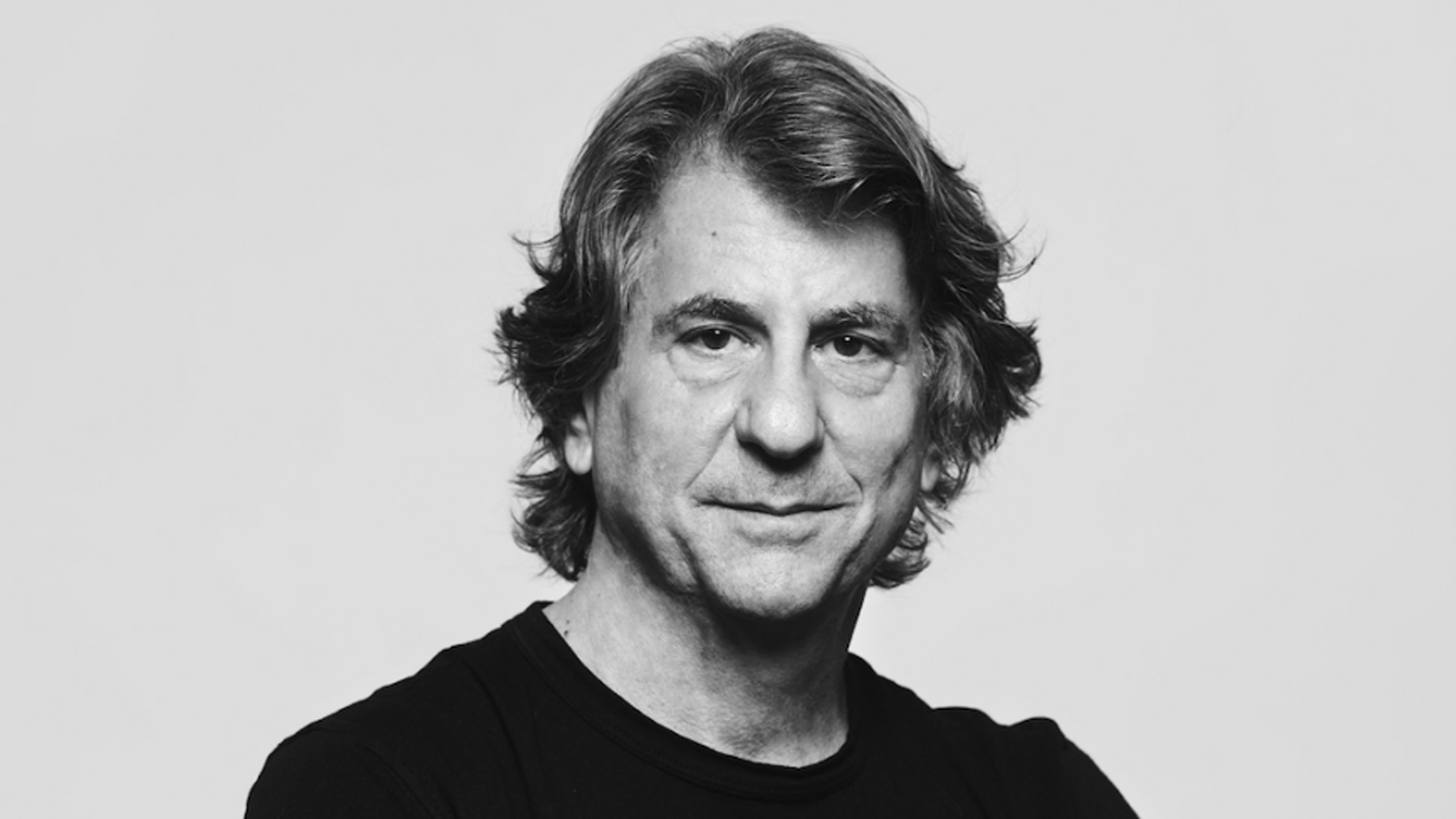
Not many designers and architects can boast an Emmy Award. But David Rockwell is celebrating three decades of exceeding design expectations, including some of the grandest hotels and restaurants in the Middle East.
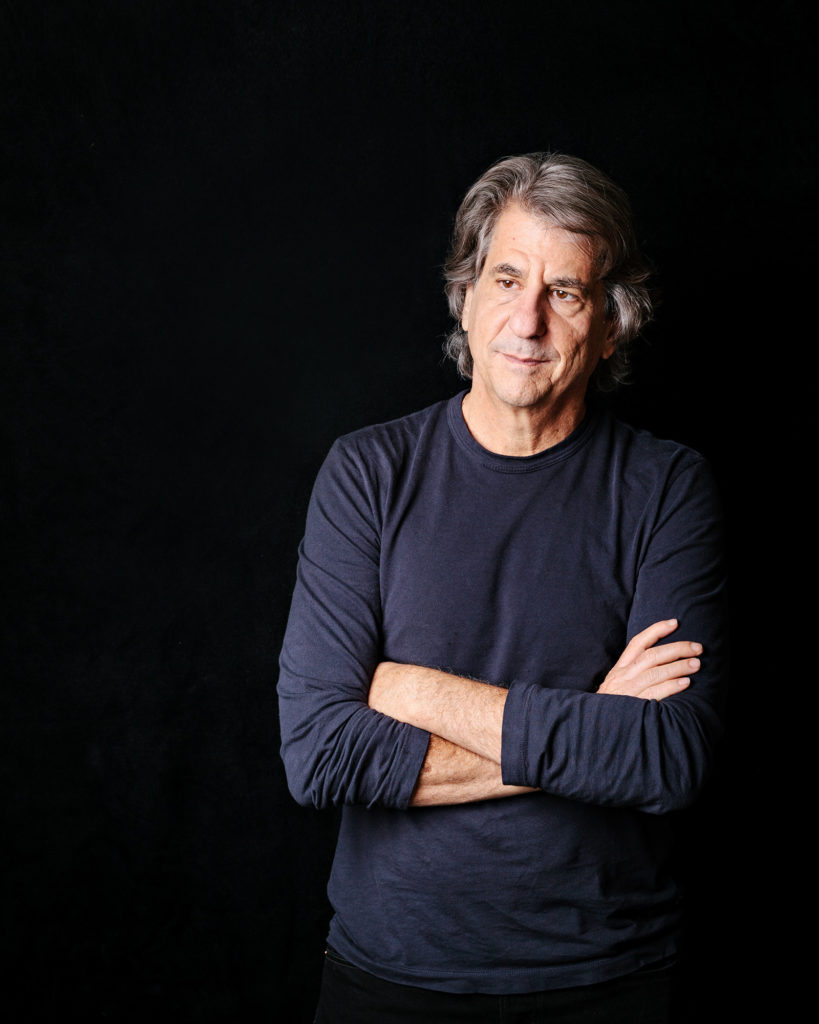
Architect and designer David Rockwell shot at his NY Union Square office on October 8th 2014.
PHOTO: Axel Dupeux for The Wall Street Journal
Known for his show-stopping hotel and restaurant designs, his awards include: the Smithsonian’s Cooper-Hewitt National Design Award; three Tony Award nominations; and an Emmy Award for Art Direction for the 82nd Annual Academy Awards telecast.
“Design is not a distinct discipline. Knowledge and skill sets enable the realisation of a design solution; without these design would be art,” explains Rockwell. “I don’t have one type of design philosophy. I have been lucky to fuse my interests in theatre, public spaces and communal gathering places into my architecture and design projects.”
His 20-year collaboration with Chef Nobu Matsuhisa (Rockwell designed the original restaurant in 1994) gave him entry into the region with Nobu in Dubai in 2008. Rockwell returned to the region again in 2012 with the Astor Grill and Gordon Ramsay restaurants at the St. Regis in Doha.
His Doha Nobu is the epitome of grace. With elegant and dramatic references to Doha’s history of pearl diving, the city’s 2400-square metre Nobu on Doha Bay at the Four Seasons Hotel boasts elliptical ribbons of river stone capped with bronze accents that form the exterior, resembling a coiled shell and creating the three tiered levels of the restaurant. Its magical pièce de résistance: running through all the floors is a massive suspended installation comprising hundreds of pieces of iridescent pieces of porcelain made to look like fish scales, created specifically for Nobu Doha by the Canadian artist Pascale Girardin.
The latest Nobu Hotel in Riyadh is the first luxury boutique hotel in the city, boasting an all-star cast of partners that includes Robert de Niro. The hotel’s 134 rooms, including the Tribeca Suite and the posh Nobu Royal Suite, will feature a similar dedication to significant local cultural and historic moments that reflect the connection between Saudi and Japanese cultures.
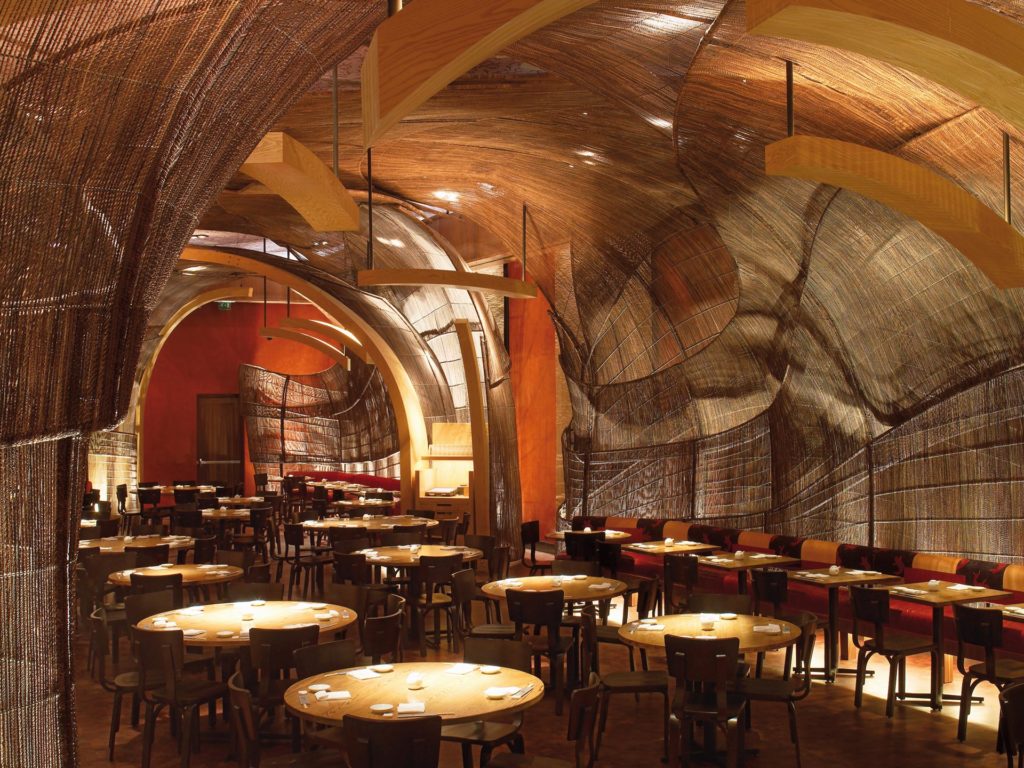
Nobu (Dubai)
Rockwell is clear about the creative significance of Dubai: “What I find most inspiring about Dubai is the opportunity it has presented and continues to present for designers of all nationalities. The confluence of cultures and voices in these regions is really outstanding – there is such an effort to mix cultures, breed creativity and innovation, and welcome differences,” he says.
“Dubai was really the first place in the Middle East where architects felt that they could operate totally unconstrained. It is certainly dominated by a ‘superlative’ approach. The surrounding regions have been such a hotbed of creative activity and experimentation, which has been incredibly exciting to observe and take part in. Dubai will continue to be at the forefront of design and innovation.”

Nobu (Dubai)
For Rockwell, the relationship between design and theatre is personal: “Theatre has always been a huge influence on my work. My mother was a choreographer and ran a community theatre. My focus on lighting and movement through space was formed through many days and evenings in the theatre. That might have been the first clue that the magic of sharing experiences in the public realm would be a passion for me.”
The stage might have even been a career alternative. “Playing the piano has always been one of my favourite activities. I have a piano in my loft in Tribeca and another in my house in the country – and I play them whenever I have the chance. So, maybe I would be a concert pianist.”
Rockwell’s understanding of life as a distinctly public activity began when his family moved to Mexico. “It materialised when my family moved to Guadalajara when I was 11. Life was public; all of the activity happened on the streets. I developed this interest in community-driven space while studying architecture at Syracuse University in New York, and then at the Architectural Association School in London.”
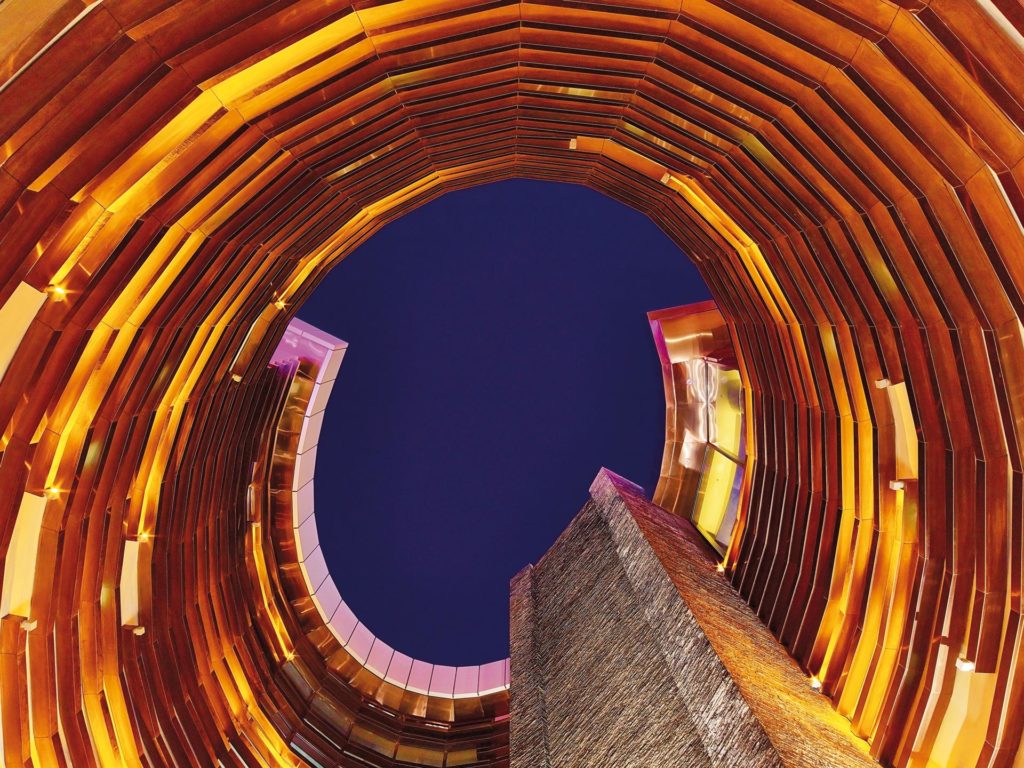
Nobu (Doha)
Mexican architect Luis Barragán still inspires him. “His home in Tacubaya always amazes me. The relationship to Mexican folk art and craft, and all the light, colours and textures that he used in his house, are permanently imprinted in my mind.”
As for contemporaries, “I could never name just one! I truly admire the work of Frank Gehry and Diller Scofidio + Renfro. I am honoured to call them friends and collaborators.”
After launching in 1984 in NYC, Rockwell is still pushing boundaries in New York – naming Imagination Playground in Lower Manhattan as one of his two favourite projects, and the redevelopment of New York City’s waterfront as his top influential cultural movement.
“I like to design on the borderline. It’s more interesting to push towards the edge, and it often results in creating something new and unexpected. We’ve just designed Chef’s Club by Food & Wine, a 557 m2 restaurant in downtown Manhattan that creates a fluid relationship between ‘performance’ and ‘audience’.”
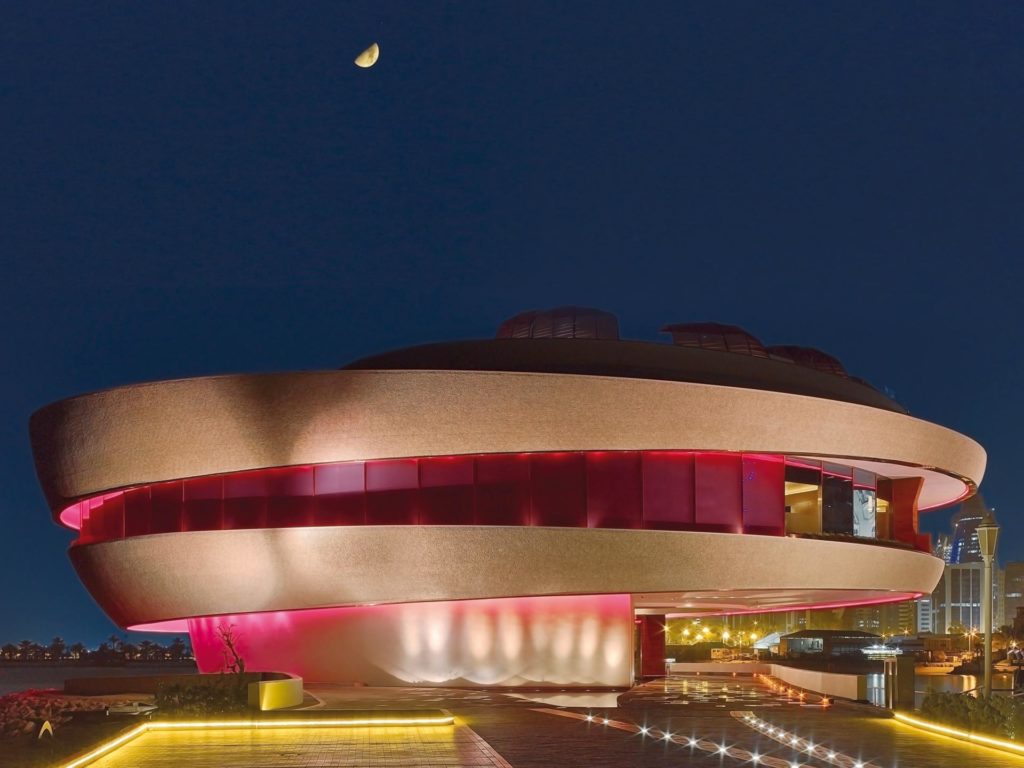
Nobu (Doha)
With new projects and partnerships emerging all over the world, Rockwell’s future possibilities seem endless, largely due to his sage disposition and dedication to collaboration.
“When you invite another designer to collaborate, you disrupt the proven models of delivery. So there’s always a huge risk of failure, which creates some tension. But as an architect, you’re wired to believe that thinking of collaboration is how we deal with living in cities. A little bit of arguing is good!”
His vision of the future is just as sharp: “We should celebrate technology and make it work alongside the built environment and the hand-crafted. Our in-house studio, LAB, blurs the line between physical and virtual spaces. Technology should become an integral part of the design.”
As for how his legacy, his response is as precise as his designs. “I would like to be remembered as a person who felt very fortunate to have done what I did.” We feel honoured to partake.
The Latest
Textures That Transform
Aura Living’s AW24 collection showcases the elegance of contrast and harmony
Form Meets Function
Laufen prioritises design, functionality and sustainability in its latest collections
Preserving Culture, Inspiring Creativity
Discover the Legacy of a Saudi Art Space: Prince Faisal bin Fahd Arts Hall explores the Hall’s enduring influence on the cultural fabric of Saudi Arabia
Channelling the Dada Spirit
Free-spirited and creative, The Home Hotel in Zurich injects a sense of whimsy into a former paper factory
id Most Wanted- January 2025
Falaj Collection by Aljoud Lootah Design
Things to Covet in January
identity selects warm-toned furniture pieces and objets that align with Pantone’s colour of the year
Shaping the Future of Workspaces by MillerKnoll
Stacy Stewart, Regional Director Middle East & Africa of MillerKnoll discusses the future and evolution of design in workspaces with identity.
Shaping Urban Transformation
Gensler’s Design Forecast Report 2025 identifies the top global design trends that will impact the real estate and built environment this year
Unveiling Attainable Luxury
Kamdar Developments has launched 105 Residences, a new high-end development in Jumeirah Village Circle.
The Muse
Located in the heart of Jumeirah Garden City, formerly known as ‘New Satwa’, The Muse adds to the urban fabric of the area
Cultural Immersion Meets Refined Luxury
The Chedi Hegra opens its doors in AlUla’s UNESCO World Heritage Site
Redefining Coastal Luxury
Sunshine Bay on Al Marjan island combines seaside views, exceptional design, and world-class amenities to create a unique waterfront haven
















